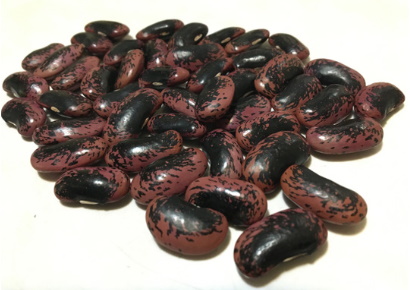By MARY ELLEN KALUZA

World population is growing by 3 billion people over the next 40 ”“ 50 years, and with it is a growing demand for beef. Over the past 60 years, global production of cattle meat has grown over 40%. Cattle grazing accounts for 80% of the loss of Amazon forests alone. One acre devoted to beef produces just 15.6 pounds of protein. One pound of beef needs 1800 gallons of water to get to our table. Additionally, and alarmingly, all meat production accounts for 14.5% of greenhouse gas emissions, with beef taking in the lead at 2/3 of that.
We need protein for repair and growth of cells, fighting disease, moving oxygen in our blood, and more. Meat is a good source of protein. But, meat isn”™t the only source of protein.
Enter dried beans, also known as pulses. Pulses are also a good source of protein. One acre of pulse crops can produce 94 pounds of protein, and use 1/10 of the water beef needs.
Other important nutritional comparisons, to continue picking on beef:
A 5-ounce steak has 300 calories, 44 grams of protein, 120 milligrams of cholesterol, 12 grams of fat (much of it is saturated fat), no carbohydrates, and no fiber.
A cup of pinto beans has 265 calories, 15 grams of protein, no cholesterol, 1 gram of fat (which is polyunsaturated), 26 grams of complex carbohydrates, and 15 grams of dietary fiber. Beans have more potassium and less sodium. Both beef and beans have iron, but we absorb plant-based iron more efficiently.
While beef provides more protein per ounce, we also get protein from other foods: dairy, grains, nuts, vegetables, and even fruits. Most Americans consume twice the protein they need.
Pulses are members of the legume family. Legumes actually feed the soil as they grow, pulling nitrogen (considered to be the most important nutrient for plants) from the air and fixing it into the soil. Legumes are widely used as cover crops and in crop rotation for this very reason. A crop that feeds itself and the next crop. How cool is that?!
And, beans are dramatically more affordable. Dried beans cost an average of $1.20/lb. vs. $5.70 for lean ground beef.
Beans are growing in popularity in the United States. Growing up the only beans I had were navy beans in the sweet barbecue side dish – baked beans, and in split pea soup. Back then I never heard of hummus (made with chickpeas), but now it is a staple and on menus everywhere. An heirloom bean club out of California has a 10 month waitlist to join! There are over 400 varieties of beans, each with their unique color, taste, and texture.
You may say, “But beans make me…you know…” Despite the old rhyme “Beans, beans, the musical fruit, the more you eat, the more you toot,” the more you eat, the more your digestive system adapts and the less gas beans will produce. Beans, with all their nutritional value are such a great food bargain, they easily make up for any errant gas.
Cooking dried beans can be intimidating. They require planning and time. Consider investing in a pressure cooker ”“ watch sales and second hand stores to save money. Cooking time is cut to a fraction and eliminates the need to soak the beans. Cook extra beans to freeze for later use to save more time. Canned beans, while ounce for ounce are almost twice the cost of dried beans, are still a better bargain than beef. No shame in using canned beans.
Take away: Eat more beans!
Author Mary Ellen Kaluza is a Certified Financial Counselor with LSS Financial Counseling. LSS Financial Counseling offers free counseling for budgeting, debt, student loans, foreclosure prevention, credit report reviews, and much more. Website: www.lssfinancialcounseling.org









